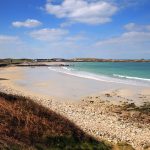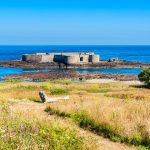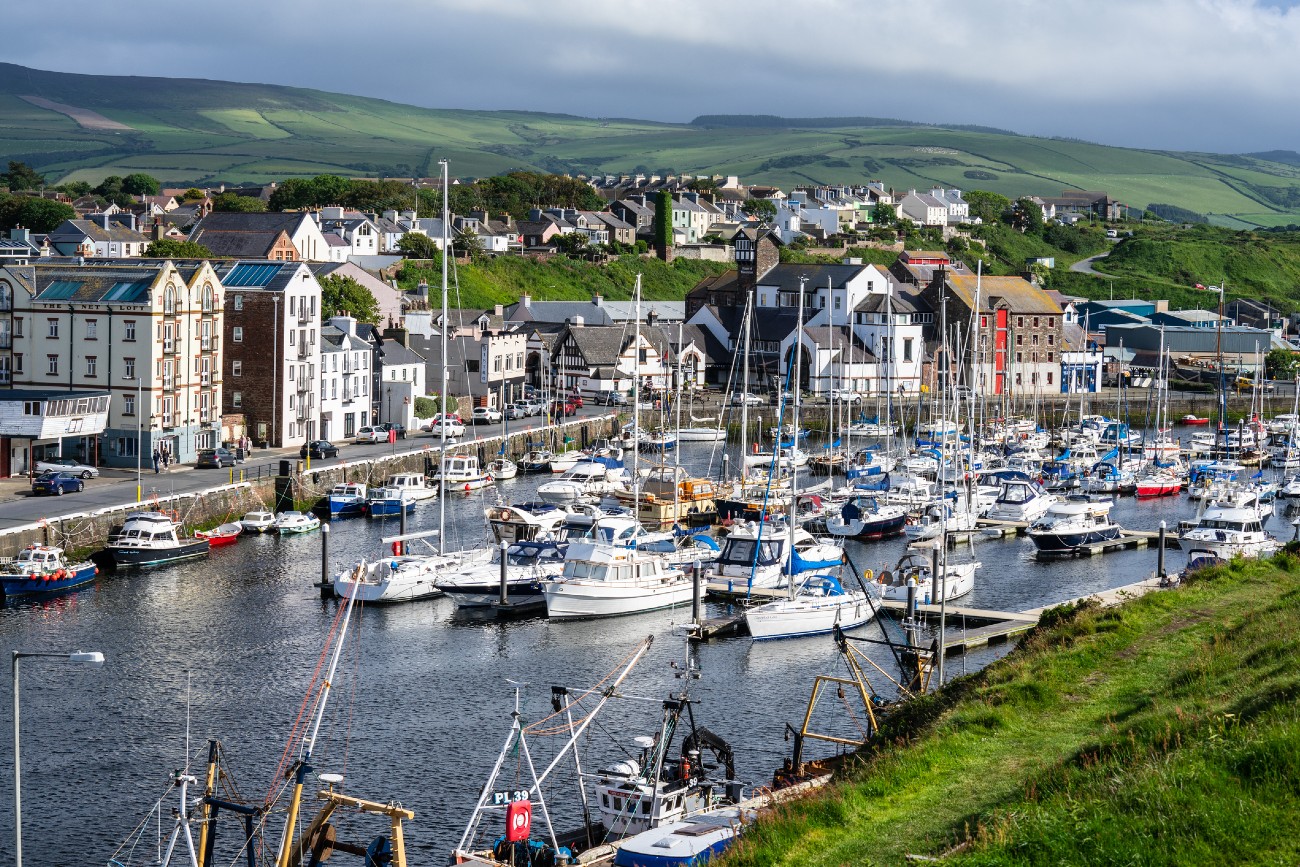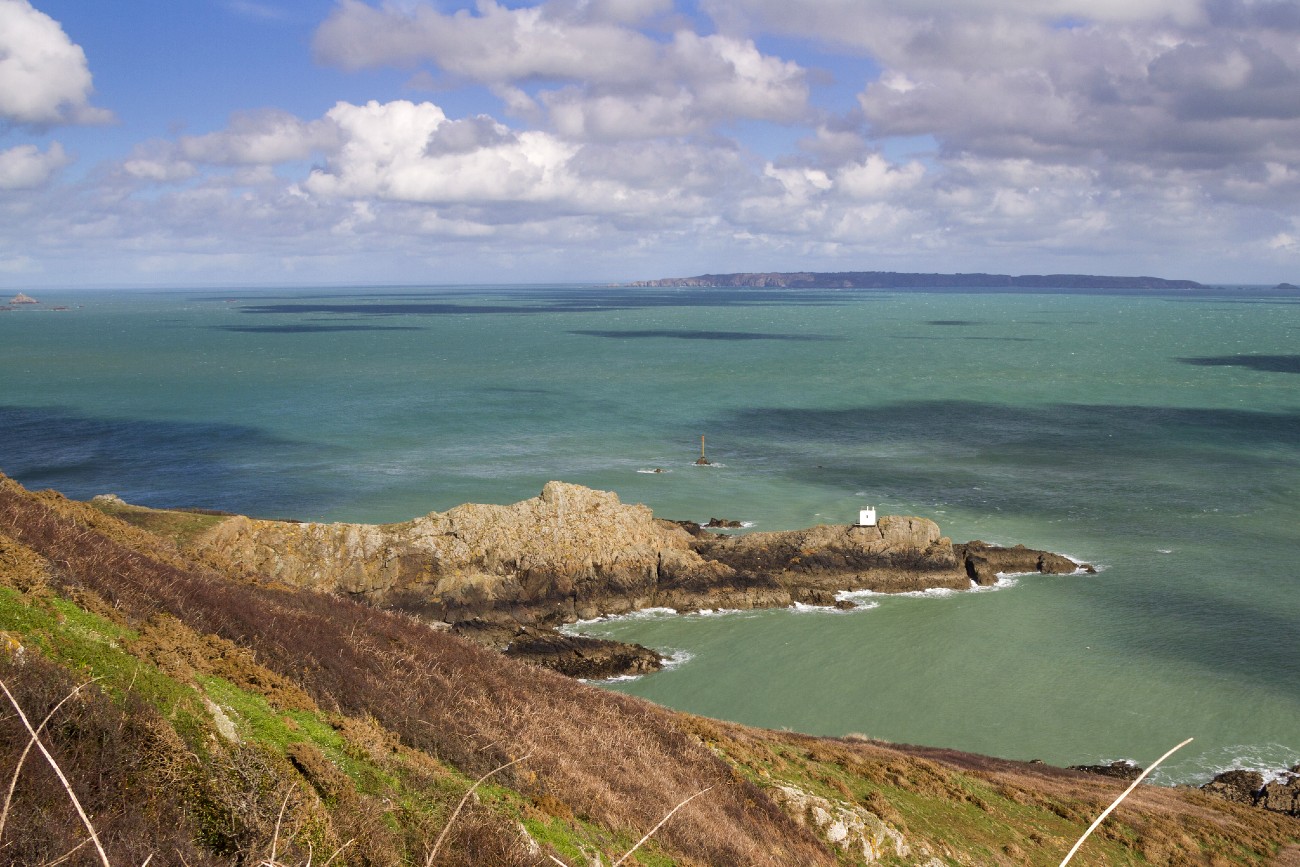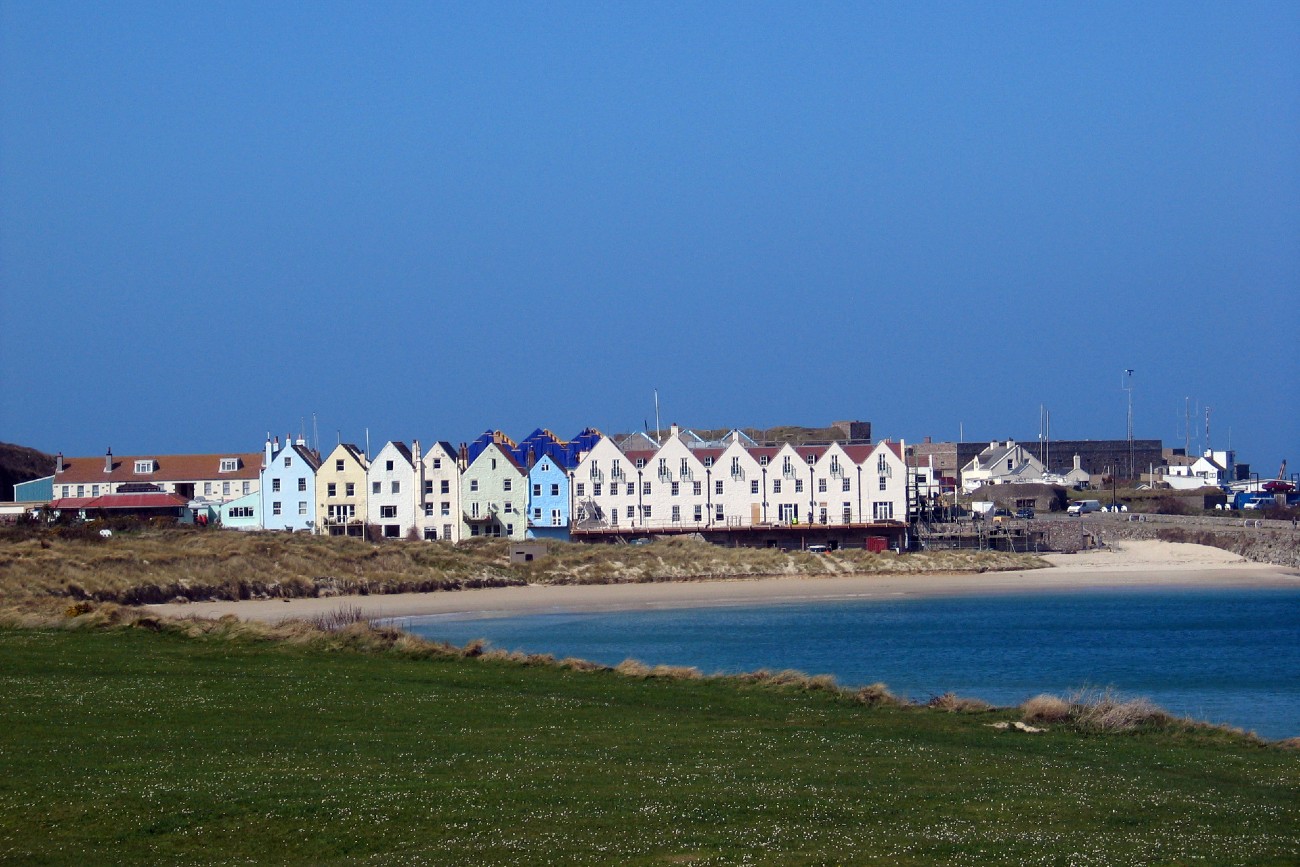
The most northerly Channel Island, Alderney is also the third smallest, covering an area of about 3 square kilometres. As a result, you’re never too far from the sea on this tranquil island paradise.
Alderney sits a short distance from the French coast and its location has led to it being a very strategic place in both recent and ancient history. Evidence of this can be found on many parts of the island, but it’s perhaps most obvious near the small settlement of Longis – on the south-east coast. In the 4th century AD, Alderney was occupied for a short time by the Romans, who built a fort which now goes by the name of The Nunnery. The fort has been well preserved over the years and overlooks the wonderful Longis Bay, making it perfect for a visit.
There are many unspoilt beaches on Alderney and the one at Longis Bay is no exception. With clean, white sand and clear waters, Longis Beach is a popular destination on the island and provides some beautiful views out to Raz Island just offshore. The bay itself is very sheltered, primarily as the result of a German anti-tank wall that stretches out into the ocean and protects the beach from the wind and waves. Another example of Alderney’s rich history, this wall was built during the Nazi occupation of the island in WWII.
With the waters being so well protected, Longis Beach is therefore ideal for swimming and offers perfect conditions for families with young children. I have visited with my friends and they absolutely loved it there. At low tide, the water recedes and reveals large areas of rock pools. Try exploring some of these tidal habitats and you might be lucky to find a few interesting sea creatures, such as starfish or anemones.
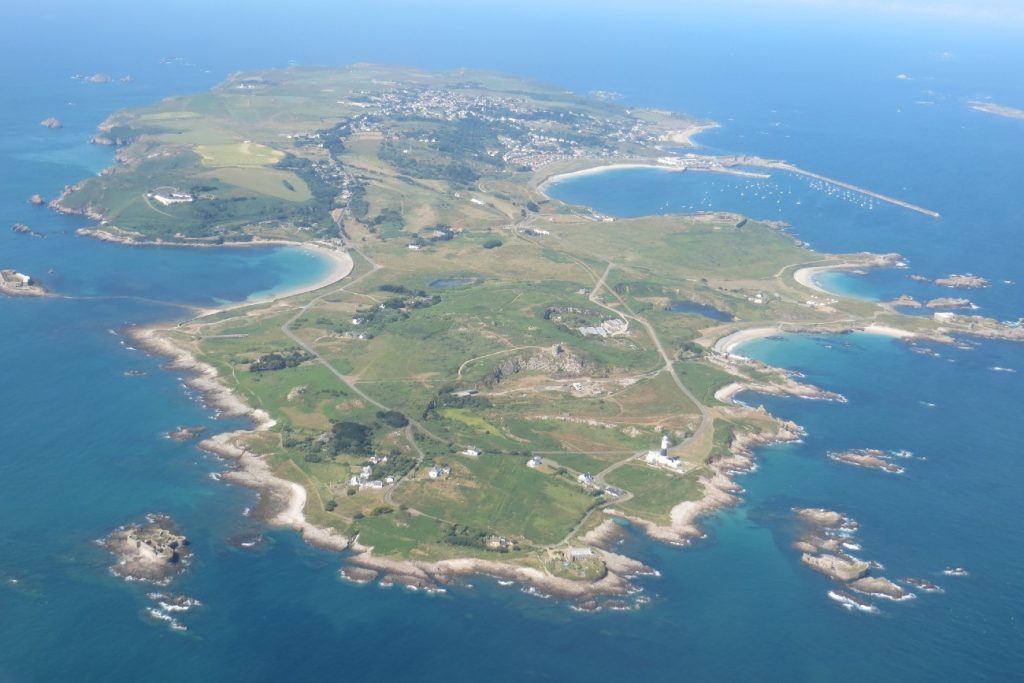
The Island of Alderney in the Channel islands
Longis Nature Reserve
Most of Longis Bay and Alderney’s eastern coastline makes up the largest terrestrial nature reserve on Alderney. Longis Nature Reserve is relatively young, having only been designated by the Alderney Wildlife Trust in 2003. Despite this, it’s a hugely important site for many local species, including some of the island’s flagship species. The reserve incorporates a diverse range of habitats, with a total of 15 terrestrial examples and many more in the marine environment. It also boasts one of the largest freshwater ponds on Alderney and is therefore a magnet for birdlife of all sorts.
Scrubland and grassland dominate the landscape of Longis Nature Reserve.
The floral diversity in the region is quite incredible, with more than 500 species of flowering plants being identified on the eastern coastline. The island has on average about 100 plant species per square kilometre – far greater than in any part of the UK. The reason for this is Alderney’s location, which is within a climate zone favoured by both northern and southern species. Therefore, a stroll through the nature reserve during the summer months is likely to be a very colourful experience.
The area is also a great place to see wildlife. Longis Nature Reserve is home to a variety of birdlife and supports breeding populations of a few endangered species, including some which are at risk of extinction in many European countries. Some of the highlights include the Dartford Warbler and the Oystercatcher, with the loud cries of the latter being a lovely backdrop to a coastal walk here.
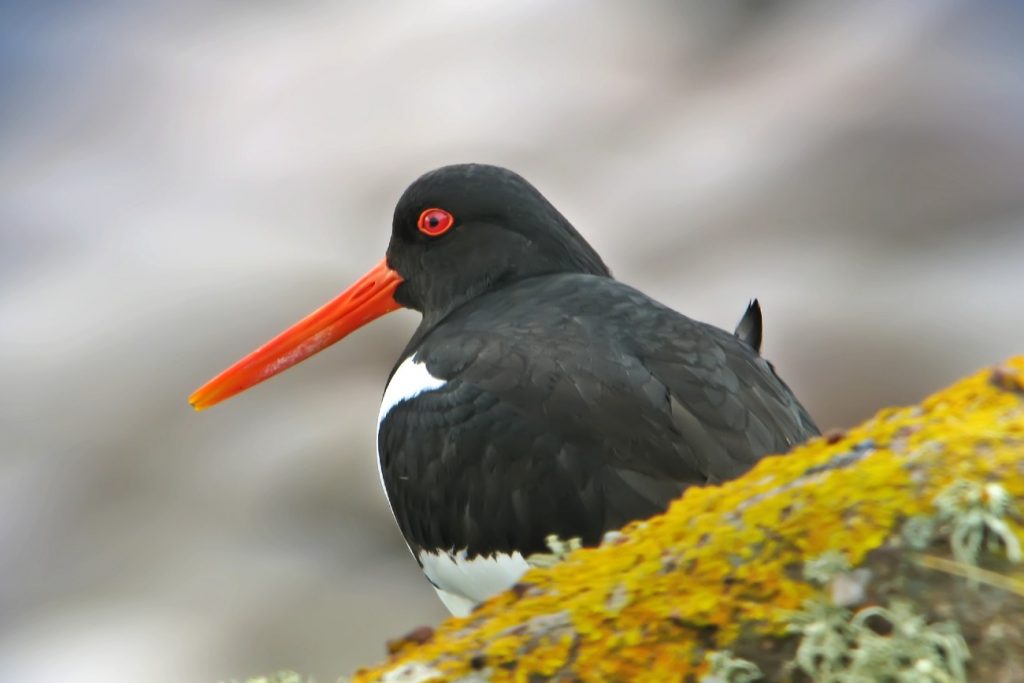
Oystercatcher at Alderney
Prickly Customers
Alderney might be great for birdwatching, but one of the most interesting animals to be found on the island is the humble Hedgehog. Mammal species are generally not prevalent on the Channel Islands, due to their isolation, however the European Hedgehog is one of the ten mammals to have found its way to Alderney. The Hedgehogs of Alderney are quite famous animals, something that is largely thanks to an unusual trait – blonde spines.
This characteristic is incredibly rare among hedgehogs in other parts of the world and has arisen in Alderney’s Hedgehogs as a result of inbreeding. Hedgehogs were introduced to the island accidentally in the late 60’s, and it’s thought that a few of these individuals carried the genetic variation for blonde spines. Over time, the trait has spread through the population and about 60% of the hedgehogs on Alderney are estimated to be blonde, in stark contrast to the traditional brown colouration of the species.
Despite being a struggling species in the UK, the hedgehog seems to be doing well in the Channel Islands and is a relatively common sight. Being an animal that favours a range of habitats, you might be able to spot a Hedgehog anywhere on Alderney, however they are surprisingly common in parks and gardens. Many local residents leave out food and water for these nocturnal creatures and this might be one of the best chances to see one.
Alderney is therefore a very unique place in the Channel Islands region and has an incredible amount to offer, with the lack of tourists in comparison to the larger islands making it a peaceful place to explore. The Longis area in particular is a great destination and harbours both cultural offerings and intriguing wildlife.
Don’t miss also the other Channel Islands! Learn more about the beaches on Guernsey: The Very Best Beaches on Guernsey

